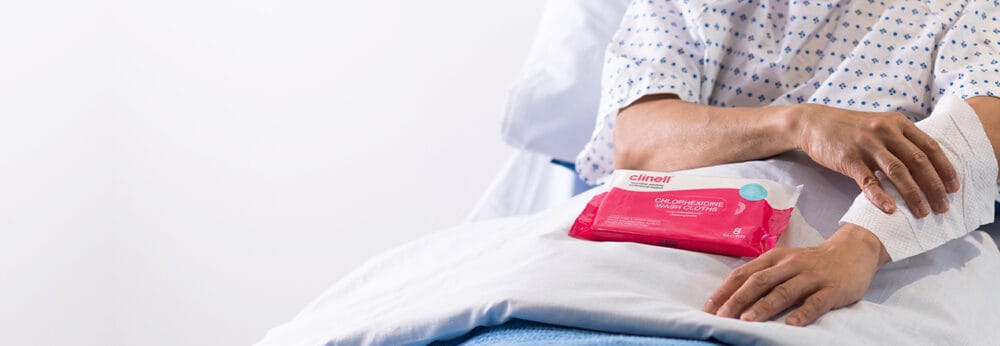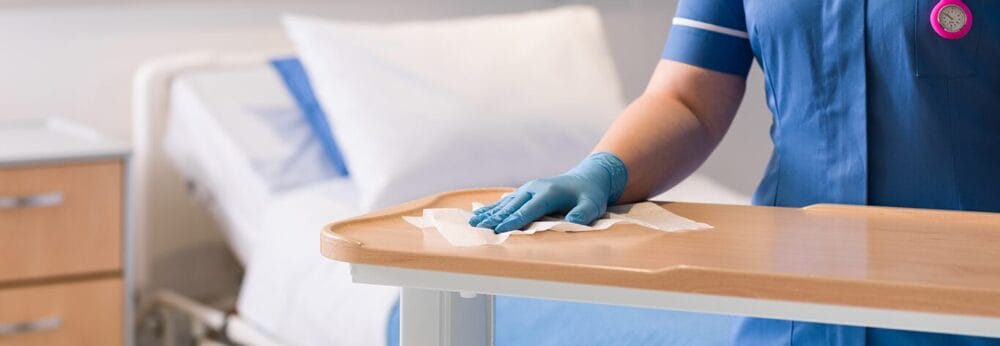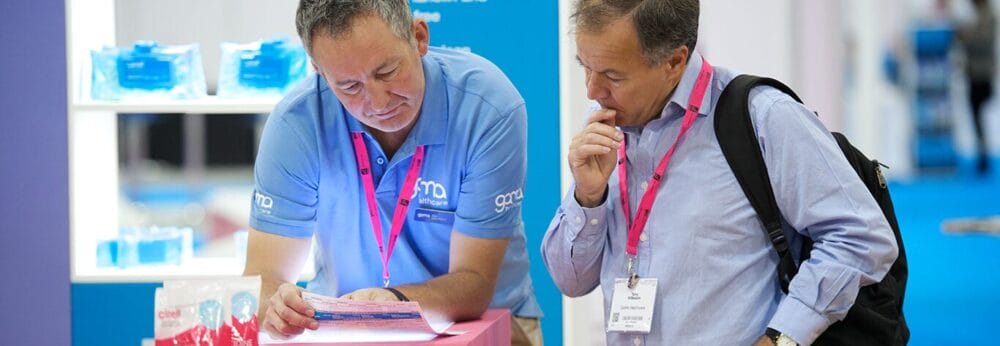Posts Tagged ‘BED BATHING’
Waterless Bathing: Benefits & Implementation challenges
In association with the Tissue Viability Society (TVS), GAMA Healthcare recently hosted a webinar on the adoption of waterless bathing practices moderated by Martin Kiernan; Clinical Director, GAMA Healthcare. Fran Spratt; Lead Nurse Tissue Viability, and Emma Lavelle; Matron from University Hospitals Southampton (UHS) NHS Foundation Trust, openly discussed: Watch the webinar recording What is waterless bathing?…
Read MorePreventing surgical site infections
A useful review published recently in an orthopaedic surgery journal (by Katarincic et al.) covers the various interventions that are often introduced to reduce the risk of surgical site infection (SSI). The evidence for some interventions is stronger than others, but there’s much we can do throughout the patient journey to reduce the risk of SSI, from…
Read MoreA “halo” effect of chlorhexidine patient bathing: reduced environmental contamination
An Irish study has examined whether daily bathing of patients using chlorhexidine results in a “halo” effect, in reducing environmental contamination. The study found that contamination of surfaces with VRE and ESBL Enterobacteriaceae (ESBL-E) in the near-patient environment was significantly lower when chlorhexidine bathing was in operation. The study was performed in a 12-bed mixed speciality…
Read MoreMore evidence that chlorhexidine reduces MDRO colonisation in the ICU
A US before-after study evaluated the impact of introducing chlorhexidine daily bathing in an ICU setting. In line with other studies, the rate of acquisition of key hospital pathogens, including VRE, MRSA, and antibiotic-resistant Gram-negative bacteria reduced in response to the introduction of chlorhexidine, and remained lower over time. The 8 month before-after study was performed in…
Read MoreAn interview with Martin Kiernan: education, education, education!
IVupdate have published an interview with Martin Kiernan (our very own clinical director) by Andrew Jackson of IVTeam.com, which is well worth a listen. The interview covers Martin’s career (listen out for the words of wisdom from used car sales…), proudest moments, views on patient safety, and the importance of bundle implementation. The focus of the interview is around…
Read MoreChlorhexidine daily bathing reduces MDRO colonisation
There is accumulating evidence that daily bathing using chlorhexidine wipes prevents the transmission of MDROs. Most of the evidence to date has been about reducing Gram-positive bacterial pathogens (such as MRSA and VRE). So a study including Gram-negative bacterial pathogens (such as Klebsiella pneumoniae and E. coli) is welcome! A recent Spanish study shows that daily bathing with chlorhexidine is effective in…
Read MoreDaily chlorhexidine bathing works in a high prevalence MRSA ICU setting
A recent Korean study underlines the value of daily chlorhexidine bathing, demonstrating a reduction in the trend of MRSA incidence in a high-prevalence ICU setting. The study also underlines the threat of reduced susceptibility to chlorhexidine emerging, which may begin to erode gains that have been made through the introduction of chlorhexidine. The study was performed…
Read MoreChlorhexidine daily bathing reduces infections: multicentre study in the US
An ambitious study involving ICUs in 33 community hospitals in the US over a period over five years evaluated the impact of chlorhexidine (CHG) daily bathing. ICUs in 17 hospitals implemented CHG daily bathing, whereas 16 ICUs did not, and served as controls. The study evaluated any potential changes in a host of infection-related outcomes, including CLABSI,…
Read MoreChlorhexidine vs. CRE
If you were to put chlorhexidine and CRE in the ring, who would win? On the face of it, you’d back CRE. Afterall, it’s carried in the gut; applying chlorhexidine to the skin won’t have a hope of decolonising the gut. True, but what is the mechanism of transmission of a gut-dwelling organism?Probably, contamination is…
Read MoreReflections from ECCMID 2015
This year’s ECCMID meeting in Copenhagen was universally accepted to be the first one with a significant infection prevention and control component, although it would be fair so say that the sessions were not the best attended, meaning that levels of interest in infection control in the majority of the infectious disease physicians attending still…
Read More







